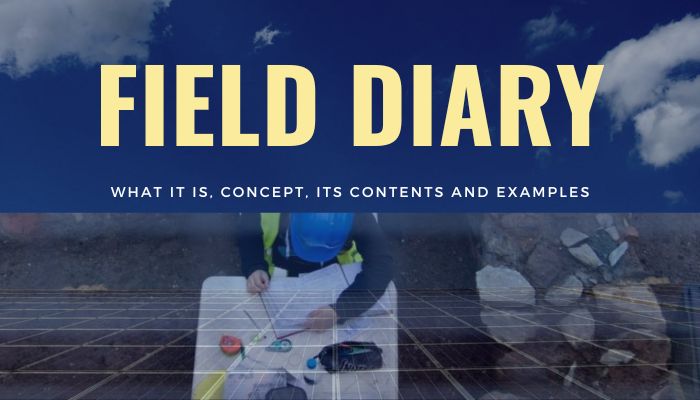Field diary: We explain what a field diary is and the disciplines that use it. What they contain and famous examples of field diaries.
What is a field diary?
A field diary or field notebook is a type of notebook that is frequently used by field researchers, that is, academics and scholars who carry out their work outside the library, directly in the field. It is a notebook or a notebook that collects notes, drawings and observations of all kinds that the researcher makes.
Field diaries are commonly used by biologists, anthropologists, geologists, paleontologists, archaeologists and even social workers, and once used by their own authors, they become documents of historical value as primary or direct sources. Some field diaries are even considered important works of literature. Keep reading this Calligram too!
The content of a field diary can be extremely diverse, but generally consists of:
A descriptive record
This consists of a more or less detailed description of what the researcher observes, that is, descriptions of reality. This type of note usually aims for objectivity, often relying on drawings, graphs or measurements, to give the reader a reliable idea of what was observed.
An interpretive record
This consists of the personal and professional interpretation of what was observed by the researcher, that is, his understanding and comparison of reality. These interpretations usually refer to things that the researcher takes for granted, to texts from previous studies or simply to the opinions and particular view of the researcher.
Examples of field diaries
Some famous examples of field diaries are:
- The travel diary and observations of the English naturalist Charles Darwin (1809-1882), published in 1839, where he records what he observed on his second expedition aboard the Beagle.
- The field notebook of the American naturalist Charles D. Walcott (1850-1927) on the fossils he observed in the Burgess shale in Canada, published in 1909.
- The diaries of the Swedish explorer Sven Hedin (1865-1952) in which he comments on his travels in Central Asia.
- The field notebook of the German explorer Wilhelm Filchner (1877-1957), the result of the second German expedition to Antarctica.
- The field diaries of the Canadian anthropologist Wade Davis (1953-) from his journey along the Amazon River in South America, together with the ethnobiologist Timothy Plowman.
